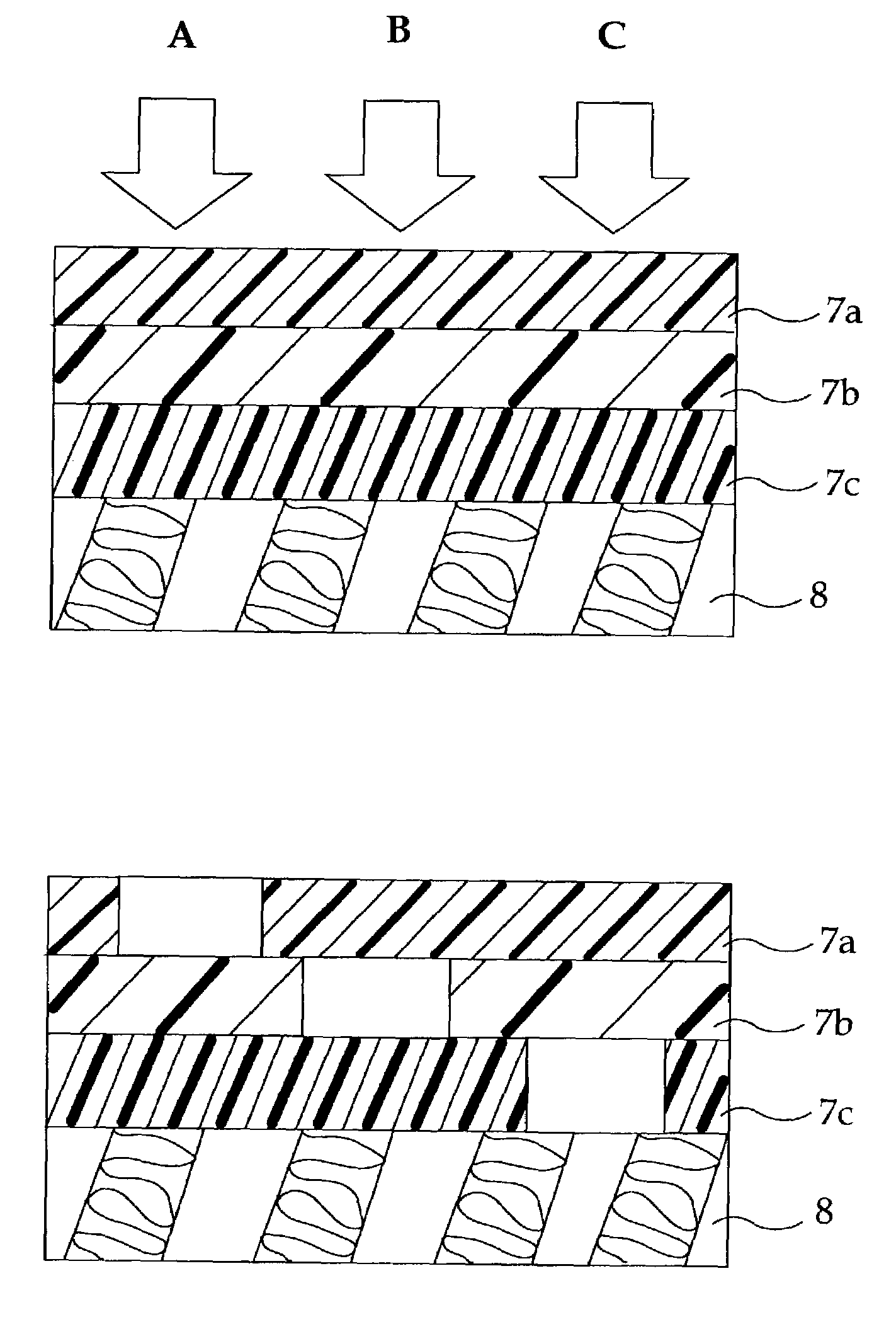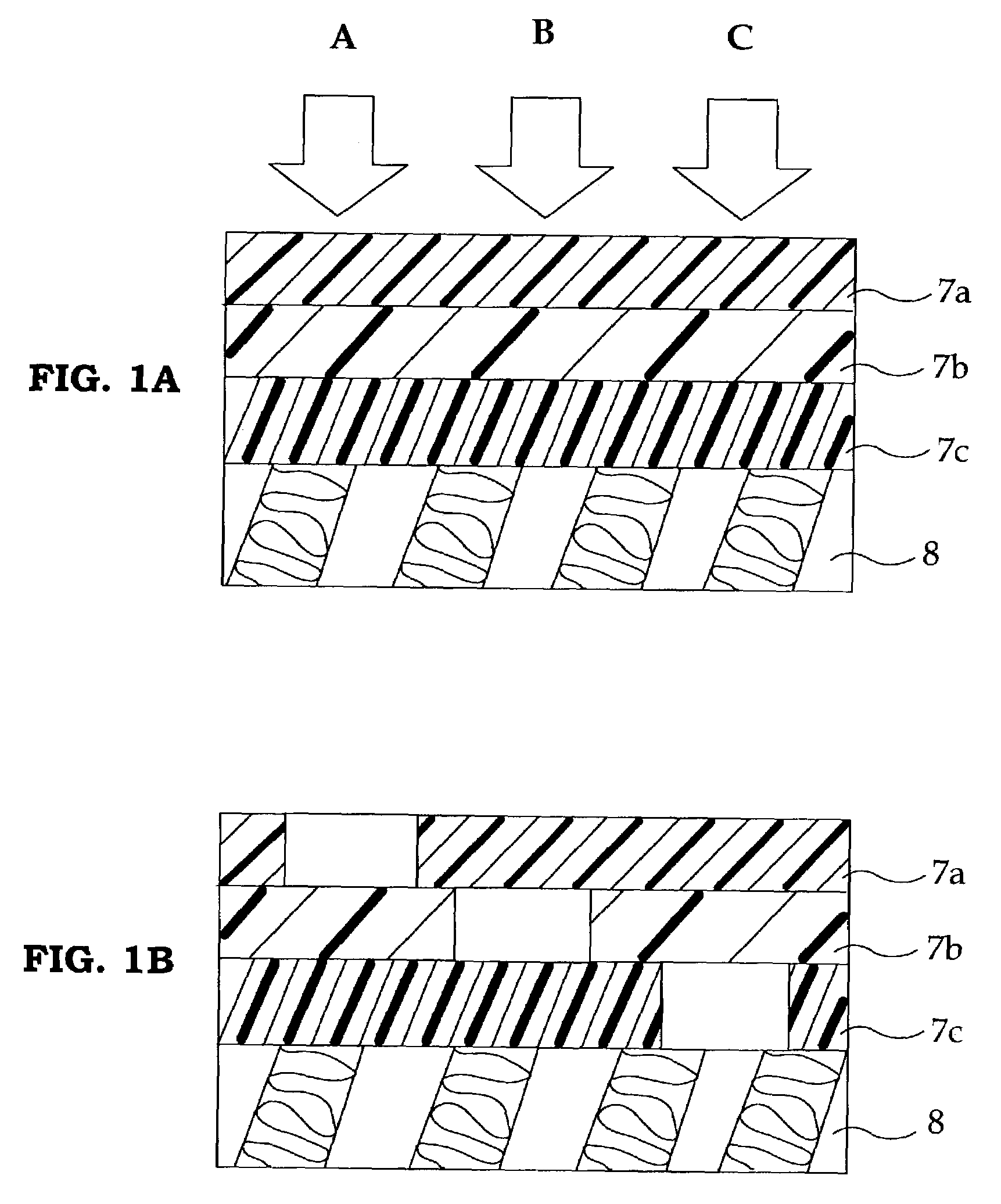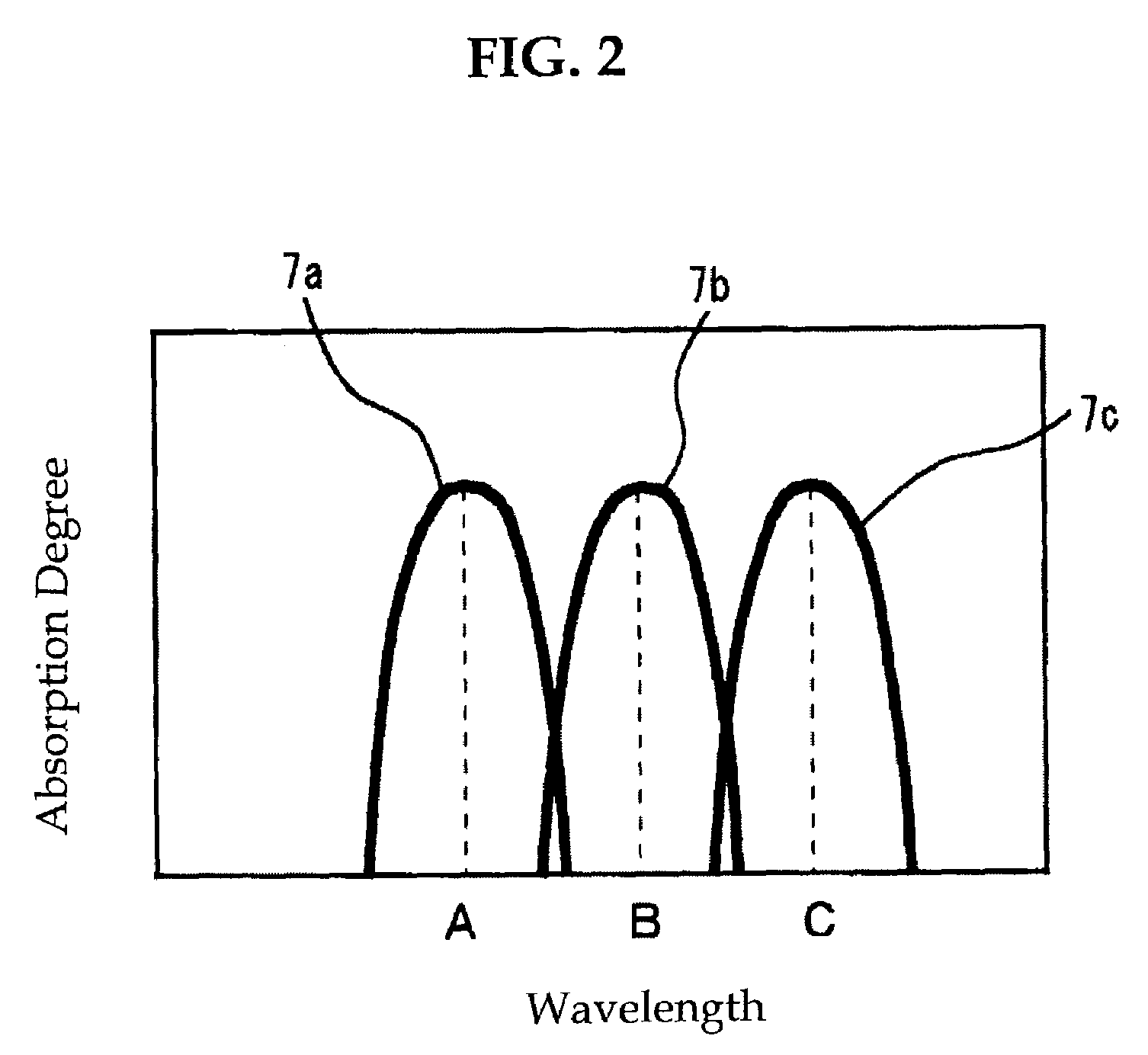Image display medium, process for forming image, and multicolor image-forming apparatus
- Summary
- Abstract
- Description
- Claims
- Application Information
AI Technical Summary
Benefits of technology
Problems solved by technology
Method used
Image
Examples
examples
[0141]The present invention will be described in further detail with reference to several examples below, which are not intended to limit the scope of the present invention.
example a-1
[0142]A coating solution was prepared by using 20 parts by weight of[0143]2-[1-(5-methyl-2-p-dimethylaminophenyl-4-oxazolyl)ethylidene]-3-isopropylidenesuccinic anhydride (hereinafter briefly referred to as “PC 2”) as a photochromic compound, 30 parts by weight of tetradecylphosphonic acid as an electron accepting compound, 50 parts by weight of polystyrene as a binder, and an appropriate amount of toluene as a solvent. The coating solution was applied to a quartz substrate and thereby yielded a cast film.
[0144]The cast film was temporarily heated to 80° C. using a heat roller. An absorption spectrum of the heated cast film before irradiation with light was determined to find that the film showed absorption in ranges from 300 nm to a little under 400 nm with a maximum absorption wavelength of 320 nm and was colorless.
[0145]The film was then irradiated with ultraviolet radiation of 366 nm extracted from a high pressure mercury lamp and thereby turned magenta with maximum absorption w...
example a-2
[0151]An image display medium was prepared by the procedure of Example A-1, except that 40 parts by weight of alpha-hydroxytetradecanoic acid as the electron accepting compound, 40 parts by weight of polystyrene, and 20 parts by weight of PC 2 were used. The image display medium was subjected to heat treatments and its decolorizing energy was determined by the procedures of Example A-1. The decolorizing energy after temporarily heating to 80° C. was about 1500 mJ / cm2 as in Example A-1, and the energy after temporarily heating to 170° C. was 33 mJ / cm2.
[0152]These results verify that the decolorization sensitivity can be reversibly changed by incorporating a carboxylic acid compound having an aliphatic group containing 12 or more carbon atoms as the electron accepting compound into the photoconductive layer.
PUM
 Login to View More
Login to View More Abstract
Description
Claims
Application Information
 Login to View More
Login to View More - R&D
- Intellectual Property
- Life Sciences
- Materials
- Tech Scout
- Unparalleled Data Quality
- Higher Quality Content
- 60% Fewer Hallucinations
Browse by: Latest US Patents, China's latest patents, Technical Efficacy Thesaurus, Application Domain, Technology Topic, Popular Technical Reports.
© 2025 PatSnap. All rights reserved.Legal|Privacy policy|Modern Slavery Act Transparency Statement|Sitemap|About US| Contact US: help@patsnap.com



